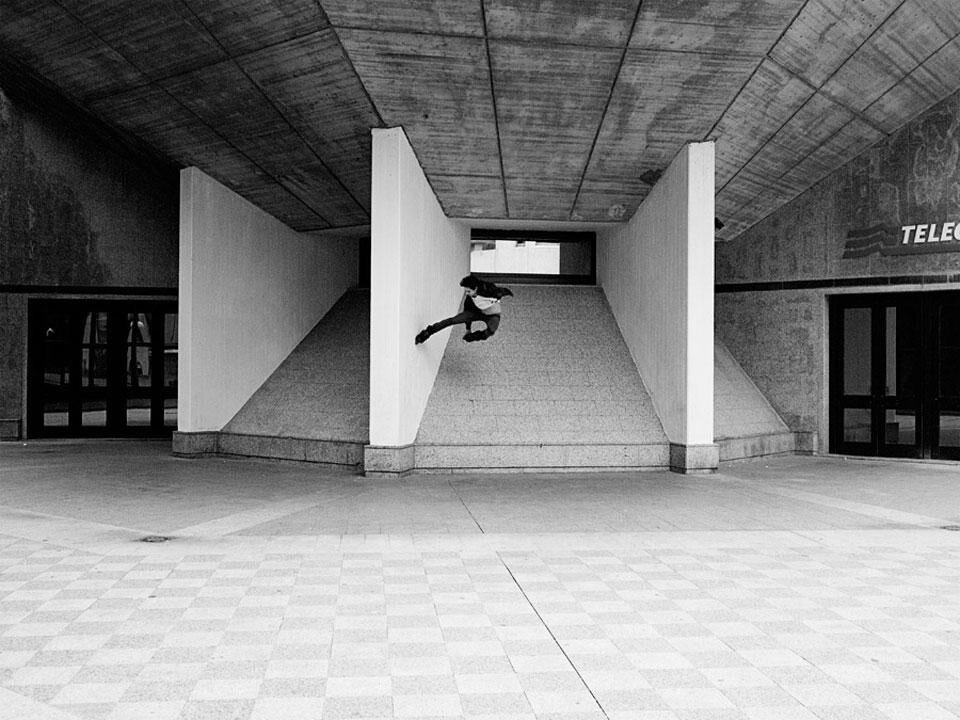The photographs he has built up over the years do not seek out spectacular shots of the bladers and skaters' performances but pan out to capture the city. Using a 40 mm lens, this acrobatic photographer unveils different potential ways to explore and experiment with snippets of the everyday urban scenario. Context is never a backdrop to his black and white composition, but is instead placed on the same level as the figures, depicting a suspended, "colour-free" dimension where the movement in space and time seems frozen.
Fabrizia Vecchione: Can you tell me more about your background as a "photographer/blader"?
Pietro Firrincieli: I was given my first red and black skates on my fifth birthday in 1990; then came a Rollerblade boom in 1996 and it wasn't hard to talk my parents into buying me a pair so that I could enter contests, which were extremely popular in Italy.
Photography did not appear on the scene until 2008, after I had trained as a graphic designer and video maker. After working with a photographic studio in Verona and receiving an honourable mention from Tau Visual, in 2009 I decided to enrol on a master course in photo-journalism organised by Contrasto, in Milan. There, I started focusing on architectural photography with Alberto Sinigaglia, using the pseudonym Kassel & Wassel. In the meantime, I worked for a while with Cesuralab, a collective of photo-journalists founded by Alex Majoli, the current president of Magnum in Paris.
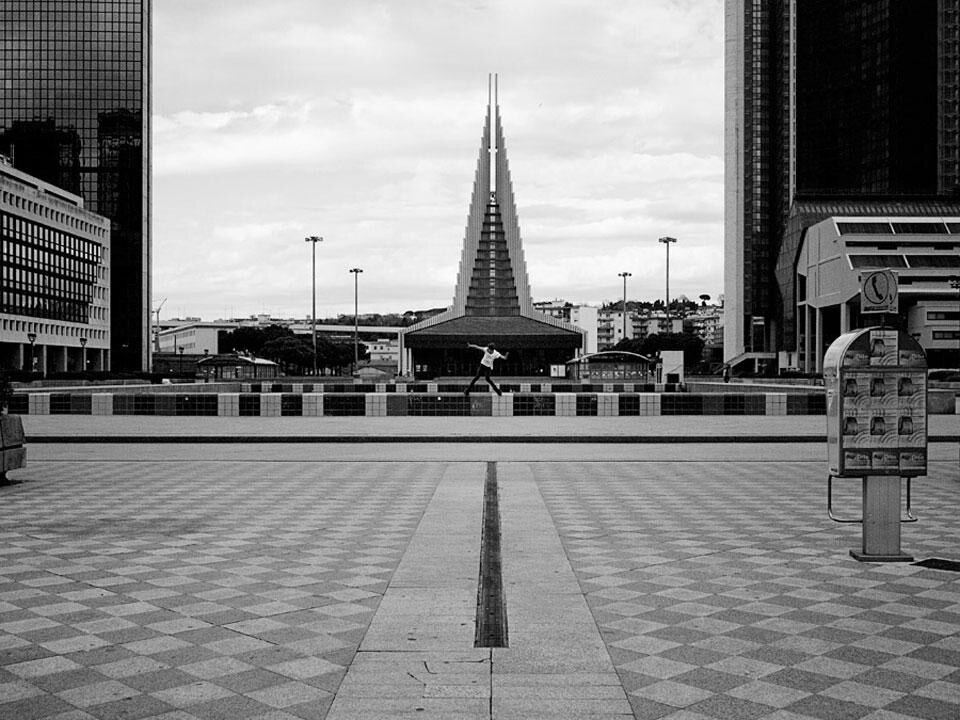
Let's begin with Architecture and Suspension, the core element in the Blade Diary series and fanzine which I self-produced in 2009 as a collection of my very first photographic experiments. The iconography of the Freestyle Rollerblading industry has always used fish-eye lenses and flashes to highlight athleticism, at the total expense of the relationship between body and space, and the mood of the location.
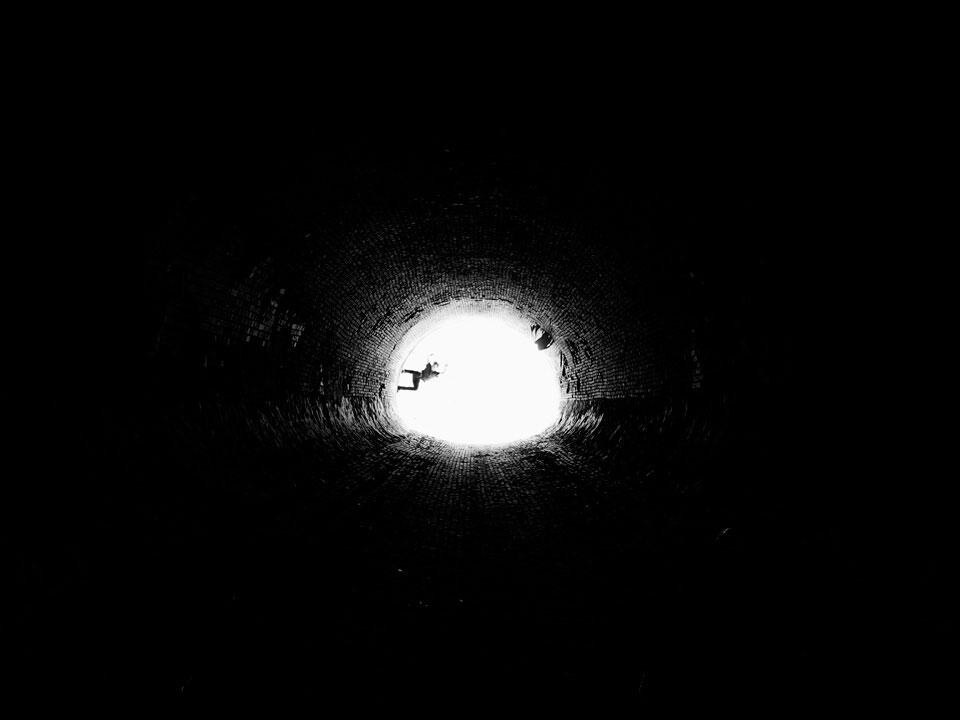
I have always felt the need to show these aspects. I tried with two videos, one in 2006 and another in 2007, but it was only after training as a photographer, learning to portray spaces and discovering the work of Larry Clark, Nan Goldin, Gus Van Sant and Hedi Slimane that I realised I finally had the knowledge needed to convey my imaginary.
Spot checking and choosing the trick for the space are crucial parts of the street action sport culture, but specialist magazines often seem to pass them by in favour of the technical difficulty and danger
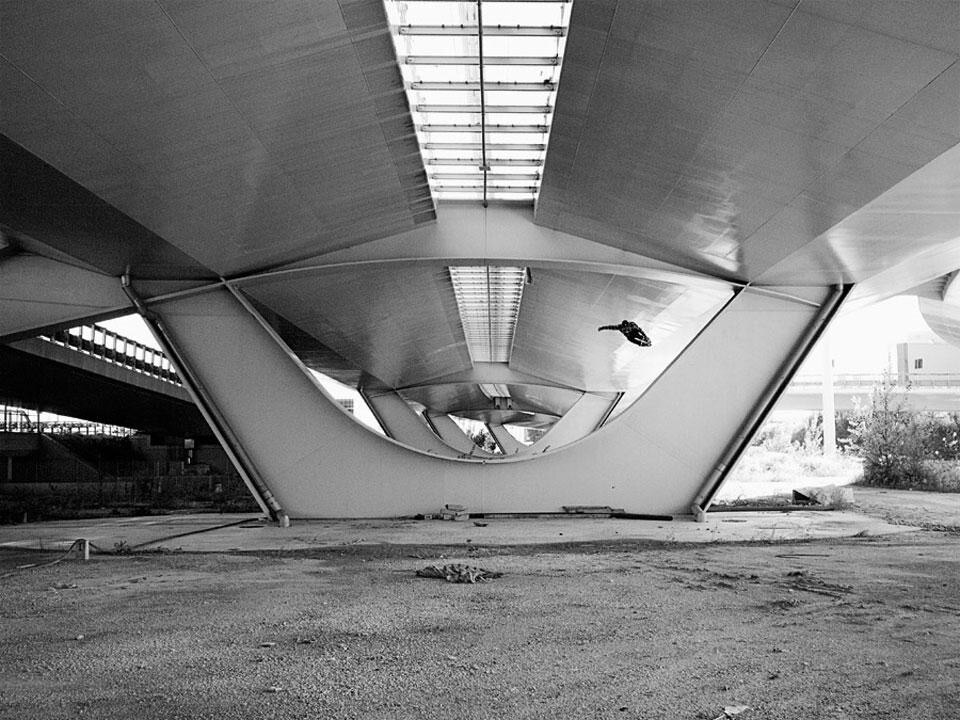
It is the performance itself that seeks out and, for a moment, finds the balance of the body in space. I simply try to record this relationship, trying to sully it as little as possible with linguistic overtones. I nearly always shoot front-on, on a single plane and with just one lens, allowing the natural light to convey the mood of the place. I believe that mood is crucial. What would a Ghirri or De Chirico picture be without its mood?
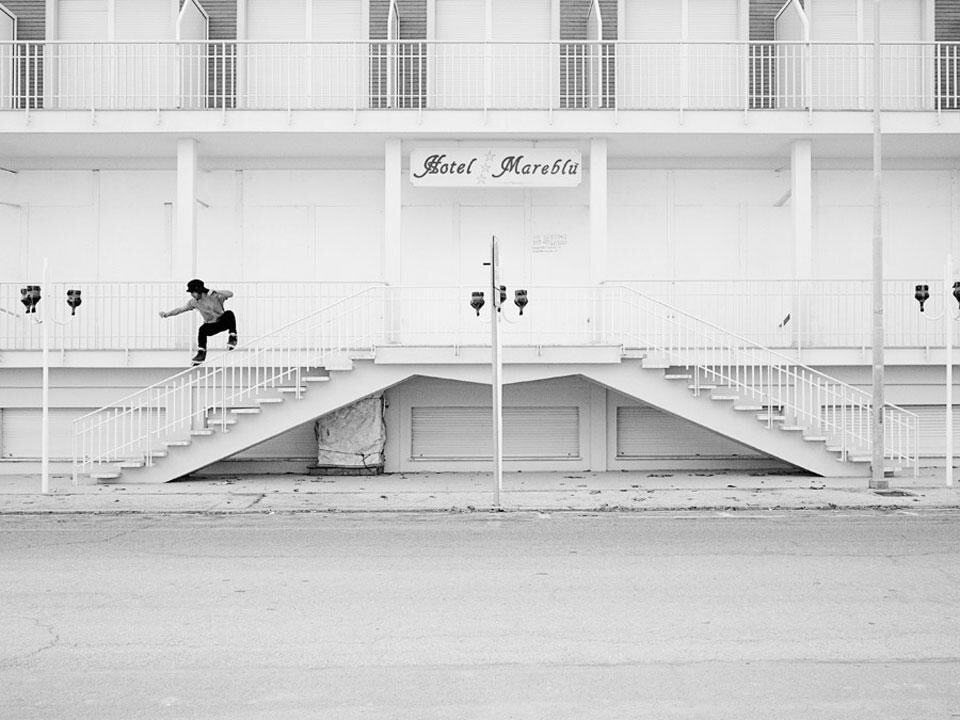
Freestyle Rollerblading was born in the street and bladers gain credibility within the culture and attract sponsors in the industry by the way they choose and interpret urban spaces. Skate parks have always been used as training grounds, providing structures that reproduce most of the features you can find in the street but in simpler sizes and gradients: hand rails, ledges, banks and stairs. Concrete bowls follow the same principle and stem from the Californian swimming pools where skateboarders first convened during the 1970s' drought. Some years ago, the finest street bladers started convening in the historic bowls of the American West Coast, lending new credibility to skate parks.
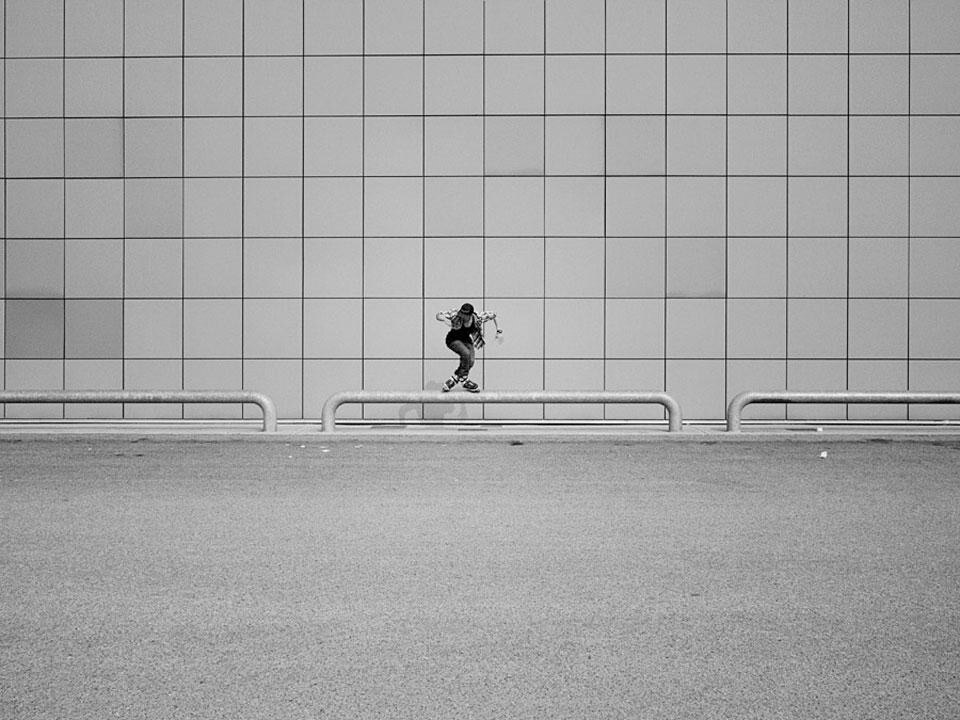
Until about ten years ago, almost anywhere that could be classed as a "top spot" was on the American West Coast because the industry and media linked to the sector were based in California. Rarely buildings, the spots are more likely to be urban furnishings or projects for public spaces, so quite hard to identify; Hubba Hideout and China Banks in San Francisco, the Leap of Faith and El Toro in San Diego and, on the East Coast, Brooklyn Banks in New York all spring to mind.
All of these spots are closed for one reason or another but Barcelona has become the new mecca and, along with Paris, a city with a tradition that developed via street cultures, have become places of pilgrimage.
The architectural icons that can be classed as Top Spots in Barcelona are, most definitely, the MACBA and Forum; in Paris, La Defense, Gare de Bercy and Palais de Tokyo; and, if you want to talk about Italy, Milan's Stazione Centrale.
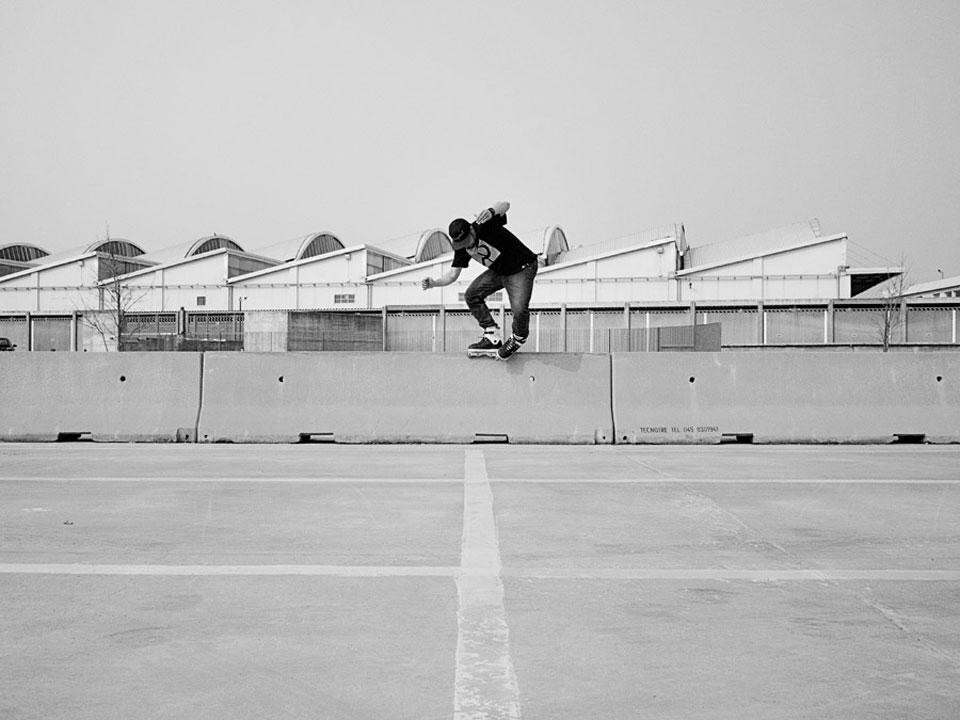
I would like to see my work published in a book soon and, why not, maybe in an exhibition.
Fabrizia Vecchione(fbrz_vecchione)



